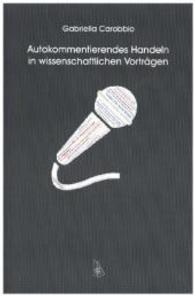Full Description
"... and still we could never suppose that fortune were to be so friendly to us, such as to allow us to be perhaps the first in handling, as it were, the electricity concealed in nerves, in extracting it from nerves, and, in some way, in putting it under everyone's eyes."
With these words, Luigi Galvani announced to the world in 1791 his discovery that nervous conduction and muscle excitation are electrical phenomena. The result of more than years of intense experimental work, Galvani's milestone achievement concluded a thousand-year scientific search, in a field long dominated by the antiquated beliefs of classical science. Besides laying the grounds for the development of the modern neurosciences, Galvani's discovery also brought to light an invention that would forever change humankind's everyday life: the electric battery of Alessandro Volta.
In an accessible style, written for specialists and general readers alike, Shocking Frogs retraces the steps of both scientific discoveries, starting with the initial hypotheses of the Enlightenment on the involvement of electricity in life processes. So doing, it also reveals the inconsistency of the many stereotypes that an uncritical cultural tradition has imparted to the legacies of Galvani and Volta, and proposes a decidedly new image of these monumental figures.
Contents
Foreword ; Authors' preface to the Italian edition ; Authors' preface to the English edition ; Acknowledgments ; 1. Galvani, Volta and the forgotten electrophysiology ; 2. "Truth and usefulness": medicine and natural philosophy in the eighteenth century ; 2.1 Galvani's education in Bologna: the University, the Institute of Sciences, and the hospitals ; 2.2. Galvani's professional career ; 2.3 Galvani's early anatomo-physiological investigation ; 3. Animal spirits, vital forces, and electricity: nervous conduction and muscular motion in the eighteenth century ; 3.1 The debate on Hallerian irritability ; 3.2 The study of electricity in the eighteenth century ; 3.3. "Artificial" electricity, "natural" electricity and their role in the human body ; 3.4. Electric fish ; 4. Artificial electricity, the spark, and the nervous fluid: Galvani's early research on muscular motion ; 4.1 The beginning of electrophysiological experimentation ; 4.2. A "problematic" turn: the observation of contractions at a distance ; 4.3. Galvani's Saggio sulla forza nervea of 1782 ; 5. A "fortunate" discovery: Galvani's theory of animal electricity ; 5.1. The study of "airs" in relation to the living organism ; 5.2. The effects of atmospheric electricity on muscular motion and the discovery of metal arcs ; 5.3. The model of the muscle as an animal Leyden jar ; 5.4. The final elaboration of the theory of animal electricity ; 6. The controversy between Galvani and Volta over animal electricity: the first stage ; 6.1. Galvani's work in the scientific culture of the late eighteenth century ; 6.2 Volta's early research on animal electricity: quantification, muscular physiology, and the "special theory of contact electricity" ; 6.3. Galvani's Trattato dell'arco conduttore: the criticism against Volta and the notion of a circuit of animal electricity ; 7. The controversy between Galvani and Volta over animal electricity: the second stage ; 7.1. Volta's "general theory of contact electricity" ; 7.2. Galvani's reply to Volta's criticisms and the1797 Memorie sulla elettricita animale ; 7.3 Galvani's research on electric fish and the various forms of electricity ; 7.4 The conclusion of the Galvani-Volta controversy ; 8. The electrophysiological work of Alessandro Volta ; 8.1 Volta and life sciences ; 8.2 Volta's research on sensations ; 8.3 Sensation and muscular motion in Volta's "chain" experiments ; 8.4 Volta's research on electric fishes and the invention of the electric battery ; 9. From Galvani to Hodgkin and beyond: the central problem of electrophysiology in the last two centuries ; 9.1 Measuring animal electricity ; 9.2 Nervous conduction: propagated electric signal and the firing of a train of gun-powder ; 9.3. The involvement of animal electricity in nerve conduction demonstrated ; 10. Neuromuscular excitability: the modern explanation ; 10.1 Cell membrane and ions: a machine generating electric potentials ; 10.2. The electric mechanism of nerve conduction and muscle excitation ; 11. Concluding remarks ; Bibliography







